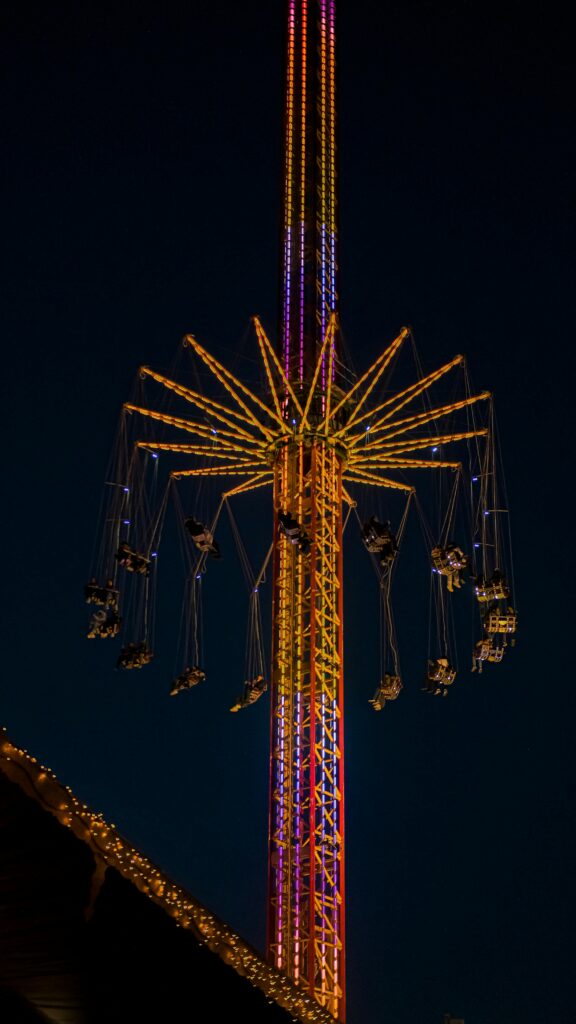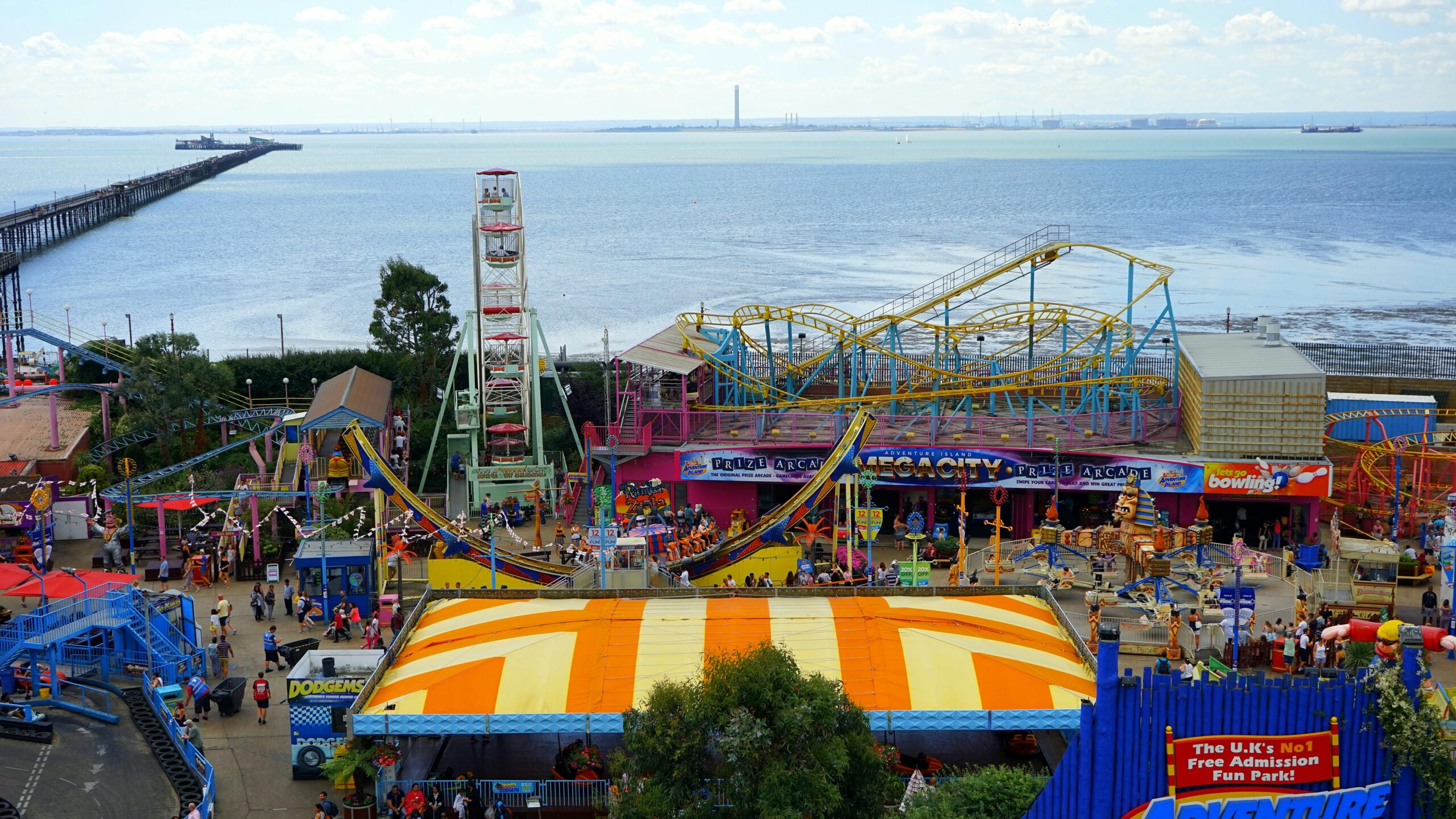The United Kingdom’s landscape is dotted with remnants of once-thriving theme parks that captured the imaginations of generations. These parks were more than just amusement venues—they were vibrant cultural hubs, local landmarks, and repositories of cherished memories. In this article, we explore the rich history of these defunct parks, delve into the factors behind their closures, and reflect on the lasting legacy they’ve left behind.

A Glimpse Into the Past
During the late 20th century, the UK experienced a boom in family-oriented entertainment, with theme parks emerging in every region. These parks offered an escape into worlds of fantasy and excitement, featuring roller coasters, water rides, and quirky attractions that became central to holiday traditions. Many parks were family-run or community-funded, giving them a unique charm that large corporate attractions often struggled to replicate.
However, as the decades passed, challenges began to mount. Escalating operational costs, increasingly stringent safety regulations, and changing consumer habits shifted the landscape of leisure activities. In some cases, modern forms of entertainment and the rise of digital technology drew families away from traditional amusement experiences, leading to dwindling visitor numbers.
The Cultural Impact
Nostalgia and Collective Memory:
For many, a visit to a local theme park was a rite of passage—a first taste of thrill, wonder, and community. The sound of laughter, the aroma of fairground treats, and the vibrant colours of rides remain etched in the memories of countless visitors. Even long after a park’s closure, community groups and social media platforms continue to celebrate these spaces, sharing photographs, personal stories, and even organizing reunion events.
Economic and Social Contributions:
Beyond the fun and games, these parks played a significant role in local economies. They provided employment opportunities, boosted tourism, and often spurred development in surrounding areas. In smaller towns, a theme park was frequently one of the few sources of year-round economic activity. With their closures, many communities felt the ripple effects—both in economic downturns and in the loss of a communal gathering space.
Reasons Behind the Closure
Several intertwined factors contributed to the decline of the once-popular theme parks:
- Financial Pressures: Rising maintenance costs and investments required to modernize attractions often outweighed the revenue, especially for parks that relied heavily on seasonal peaks.
- Safety Regulations: As safety standards evolved, many older parks found it challenging to retrofit their historic rides to comply with modern regulations without substantial financial outlay.
- Changing Leisure Trends: With the rise of digital entertainment and alternative holiday destinations, fewer families prioritized day trips to local theme parks.
- Shifts in Ownership and Management: Some parks, originally cherished family enterprises, were sold to larger companies that struggled to maintain the original charm while keeping up with modern demands.

Hidden Stories and Overlooked Details
While many articles and memory threads recount the joyous rides and sunny afternoons, several lesser-known aspects of these parks deserve mention:
- Architectural and Design Innovations: Despite being seen primarily as funhouses, many defunct theme parks were early adopters of creative design. Their imaginative ride constructions and themed environments influenced modern amusement architecture.
- Local Legends and Folklore: Over time, stories and myths developed around certain attractions—tales of haunted carousels, secret tunnels beneath roller coasters, and even quirky superstitions held by longtime employees.
- Post-Closure Transformations: Some sites have found new life. A few have been repurposed into community centres or event spaces, while others serve as case studies for urban exploration enthusiasts and historians examining the evolution of leisure culture.
- Environmental Reclamation: Nature has a way of reclaiming its space. Abandoned parks often become verdant ruins, with flora intertwining with rusting metal—a visual reminder of both decay and natural resilience.
The Enduring Legacy
Even as the rides and roller coasters fall silent, the legacy of these parks lives on. Enthusiasts and former visitors continue to celebrate the spirit of these attractions through online forums, local heritage projects, and nostalgic gatherings. Their influence is seen in modern theme park designs, where efforts are made to blend safety and innovation with the storytelling and communal spirit that once defined the classic parks.

Frequently Asked Questions
Q1: Why did so many UK theme parks close?
A: Multiple factors played a role, including rising operational costs, evolving safety regulations, changes in consumer entertainment preferences, and challenges in modernizing older attractions. Economic pressures often made it unsustainable to maintain or upgrade facilities while competing with newer forms of entertainment.
Q2: What happened to the rides and attractions after closure?
A: In some cases, iconic rides were sold or relocated to other parks. However, many attractions simply fell into disrepair. Today, some sites have been reclaimed by nature or repurposed for new uses, such as event spaces or community centers, preserving at least a fragment of their history.
Q3: Can these defunct parks be revived or repurposed?
A: While reviving a long-closed park is challenging due to financial, regulatory, and logistical hurdles, there are instances where communities have successfully repurposed former park sites. Revivals often take the form of themed events, heritage tours, or adaptive reuse in cultural projects.
Q4: What made these parks so special to the community?
A: These parks offered more than just rides—they were social hubs where families, friends, and entire communities came together. They encapsulated the excitement of exploration and adventure, and their designs often reflected the local culture and creativity of their time.
Q5: Where can I find more information or share my memories?
A: Many online communities, nostalgia blogs, and local historical societies maintain archives of personal stories and photographs of defunct theme parks. Social media platforms and dedicated forums are also great places to connect with others who share similar memories.
In remembering the magic of these now-silent spaces, we not only honor the past but also gain insights into how our leisure landscapes continue to evolve. The legacy of the UK’s defunct theme parks remains a poignant reminder of an era when every ride was a gateway to wonder, and every visit, a cherished memory.
Sources The Guardian


